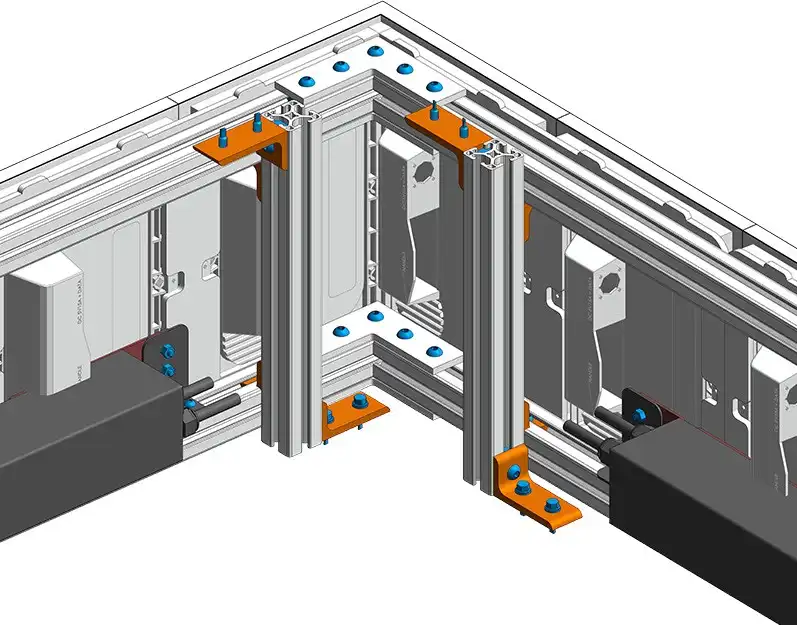
It is crucial to have a profound understanding of the framework that underpins the capabilities of BIM design applications. Among the most powerful capabilities within these applications is parametric object modeling, which provides a strong yet flexible approach for creating and modifying geometric configurations. Depending on the developer of the parametric model, these models are designed to support a wide range of adjustments, allowing numerous alternatives to be generated almost instantly. It is, therefore, achievable for multiple options to be generated almost instantly.
To facilitate automatic changes based on user input or evolving situations, the parameters and rules can be specified as operators that establish relationships with other objects. Customized parametric objects provide greater autonomy and efficiency when modeling intricate geometry.
Represented with a high degree of detail and precision, these objects or components emulate the functional behavior of physical building elements. Reflecting their real-world counterparts, these components, such as doors, windows, walls, ducts, columns, etc., are characterized by their properties and embodied with a set of information.
.webp)
Associated with data and rules, parametric objects consist of geometric definitions that do not allow inconsistencies. These objects can also be automatically modified based on predefined parametric rules. Sets of properties, including energy, acoustic, and structural materials, can be imported or integrated into other models and applications by using parametric objects.
Considered one of the BIM authoring tools, parametric objects utilize the intelligence of data-driven design that interfaces with analyses, cost estimations, and other applications. The flexibility of a parametric system is determined by the variety of rules that can be incorporated into its parametric framework.
Relational criteria like attachment, parallel alignment, and precise spacing, as well as characteristics like distances and angles, are used to create parametric object families. "If-then" statements and other conditional logic are supported by a large number of these frameworks. The process of defining object classes is intricate and entails incorporating information about how they should behave in different situations.
To learn more about parametric object modeling and its use in BIM applications, you can participate in courses taught by experts at PAACADEMY. Discover how to advance interdisciplinary collaboration in practical projects, optimize automation in parametric workflows, and implement data-driven design ideas.
_9731a6.webp)
When discussing Degrees of Parametric Modeling, Sacks and Pikas outline three distinct levels:
At the simplest level is the definition of complex shapes or assemblies defined by a few parameters. This is often called parametric solid modeling. Editing consists of making changes to the parameters and regenerating the piece or layout when called by the user. AutoCAD is an example CAD platform of this type upon which many BIM tools have been developed.
An incremental improvement is the definition of assembly modeling that automatically updates when any shape’s parameters are changed, with updates carried out in a fixed order of the whole layout. These can be called parametric assemblies. This was the recent status of Architectural Desktop.
A major improvement allows the parameters defining one shape to be linked through rules to the parameters of another shape. Because shapes may be related in different ways, the system has to automatically determine the update sequence. This is considered full parametric modeling or Parametric Object Modeling (Anderl and Mendgen, 1996).
.webp)
Jonathan Ingram contends that any framework devoid of advanced parametric capabilities cannot be classified as BIM and is inherently prone to failure when confronted with the first instance of data modification. He further asserts that the accuracy, consistency, and seamless coordination of information are ensured through the intelligent integration of parametric objects.
Moreover, he emphasizes that parametric objects offer the additional advantage of encapsulating non-graphical data, which must be deployed for purposes extending beyond mere visualization. Noted by Ingram, BIM systems, including SONATA, REfLEX, ProReflex, ArchiCAD, Revit, and VectorWorks, all utilize an integrated, parametric, information-rich, and structure-aware database architecture.
.webp)
In Understanding BIM: The Past, Present and Future, it is stated that the parametric framework inherent in BIM confers a wide array of benefits, with particular emphasis on enhancing the design and engineering processes. Some of the benefits are listed below.
_9731a6.webp)
When all variables are taken into account, the paradigm for construction design is profoundly changed by the incorporation of parametric object modeling within BIM platforms. Through the use of a potent data-driven structure, BIM not only improves the reliability and efficiency of design techniques but also enables less difficult initiatives to adjust proactively over their course.
The sophisticated connections between parametric elements provide an avenue to incorporate many kinds of variables, from sustainability issues to material specifications, while assuring consistency and coherence across interdisciplinary operations. Consequently, BIM frameworks function as catalysts to maximize design quality, maintain regulatory compliance, and facilitate fluid collaboration—finally establishing parametric modeling as an essential part of architectural and engineering practices.

You must be logged in to comment.